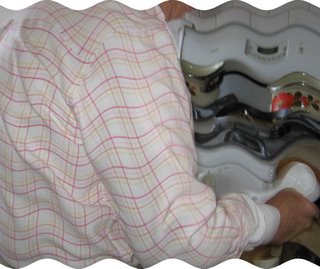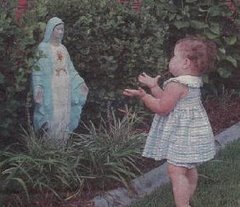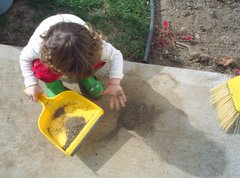A two-column lead headline in the Kansas City Star newspaper proclaims "Climate change brings Kansans dire prediction." The
Climate and Energy Project started by Salina KS-based
The Land Institute issued a press release on
Climate Change in Kansas, with predictions that western Kansas will be reduced to a desert and the entire state will get warmer and drier with dramatic consequences.
When catastrophic events are predicted, I look for the origin, background information on associated political issues, and finally scientific evidence. My motto is "the more you look, the more it smells."
[For example, NASA's Institute for Space Studies (GISS) announced that last month was the hottest October on record. WRONG! Global warming skeptics analyzed the data and found that the surreal scientific blunder was caused when scores of October temperature records from Russia and elsewhere were carried over from September and August! ]
The Land Institute was founded and is headed by
Wes Jackson, whose friendships include Jane Fonda (see photo) and
Wendell Berry "with whom [Wiki says]Jackson has shared a longtime friendship and correspondence." Wes Jackson has other interesting friends too, such as
James Howard Kunstler and
David Korten, who have spoken to yearly Prairie Festivals sponsored in Salina, KS by The Land Institute.
The
Land Institute and its head, Wes Jackson, deserve a comprehensive post in themselves. The
Smithsonian Magazine lauds Jackson:
Farming, in Jackson's view, is humanity's original sin. This fall from grace occurred around 10,000 years ago, when people first started gathering and planting the seeds of annual grasses, such as wild wheat and barley. "That was probably the first moment when we began to erode the ecological capital of the soil," he says. "It's when humans first started withdrawing the earth's nonrenewable resources." As he sees it, fossil-fuel dependency, environmental pollution, overpopulation and global warming are all extensions of the path humans took when they first started tilling the soil.
Direct quotes from Wes Jackson are published in a leftist journal interview
here:
It's clear that war and racism, poverty, sexism, the growing gap between the rich and the poor, are all connected. And when we hit a brick wall, it turns out that brick wall is capitalism. We're going to have to face that. But people want to believe it is possible to design around capitalism, through regulation and progressive legislation. But that won't work, and we need some consciousness-raising on that.
We need to be saying, "Listen folks, capitalism is inherently destructive." How do we get from where we are to where we need to be, keeping in mind that we can't just try to tame that son of a bitch. We have got to get rid of capitalism.
We've been to Washington, and we've hit the brick walls. So, we're avoiding the brick walls. Instead, we are supporting 19 graduate students from around the country. They will go back to their universities, and we hope the institute's intellectual "virus" will infect these major universities and eventually overcome their institutional "immune systems."
I've been putting forward the hypothesis that since the Stone Age there has not been a single technological product or process, including the domestication of crops and livestock, that hasn't come at the cost of drawing down the capital stock of the planet. I call that the "utterly dismal hypothesis." I'm advancing it not because it's necessarily right, but to suggest that life forms have got it as good as it gets.
A 10-page summary issued by the Land Institute appears to be the basis for the Star's front page article of November 13, 2008 on "Climate change brings Kansans dire prediction." Here are some obvious problems with the summary:
- No references are given [See a few references in orange below that should have appeared.]
- The Land Institute summary is not peer-reviewed (scientific articles that want to be taken seriously are always referred to critics for comments. Unless the critical remarks are successfully addressed by the authors, reputable journals will not publish a paper.
- The summary is only that, and does not identify a full article written by Feddema et al. under funding by The Land Institute
- The summary emphasizes a political agenda on what society should do in response to climate change
REFERENCES REGARDING GLOBAL WARMING AND PRECIPITATION:
Richard Allan and Brian Soden, as newly reported by ScienceMag.org, compared precipitation amounts with temperature and found a direct correlation using satellite observations and model simulations. The two scientists observed "a distinct link between rainfall extremes and temperature, with heavy rain events increasing during warm periods and decreasing during cold periods."
The U.S. EPA has just issued its National Water Program Strategy: Response to Climate Change that states that most extreme weather events will increase flood risk and high-flow water velocity, which will increase erosion. Warmer temperatures lead to higher levels of atmospheric water content.
A 2007 paper published in the Geophysical Research Letters provides real-world evidence of the self-regulating nature of he earth's atmosphere. Researchers analyzed six years of data from four instruments aboard three NASA and NOAA satellites to show that warming the tropical atmosphere allows more infrared heat to escape to outer space. "To give an idea of how strong this enhanced cooling mechanism is, if it was operating on global warming, it would reduce [climate model-based] estimates of future warming by 75 percent," said key author Roy Spencer.
After Dr. Spencer published his well-documented scientific paper in a highly regarded scientific journal, he was blacklisted. Read more about "scientific blacklisting" with regard to global warming I initially wanted to look at the mathematical models (computer representations) used by the Land Institute to predict these doomsday scenarios for Kansas, but the authors didn't produce any new model or data. Rather, they used GCM data prepared by three scientists from NCAR. GCMs (Global Climate Model, formerly General Circulation Model) are the basis for predictions of climate change.
If one wants to understand the complexity and uncertainty of GCMs, please google "'uncertainty analysis' GCM" or "'sensitivity analysis' GCM." What will be found are good scientific discussions of the great difficulties in accurately predicting climate change, especially regional precipitation.
GCMs are highly influenced by the data put into the model, including numbers that must accurately represent:
- greenhouse gas emission quantities
- the carbon cycle--equations
- ocean mixing of greenhouse gases and sink quantities
- aerosol forcing--equations
- solar luminosity and surface albedo
- cloud cover
- etc.
The above factors (and many more critical data) used by GCMs are often intercorrelated (some with variable time delays), and are also correlated with temperature, region, etc. This complexity leads to a CASCADE OF UNCERTAINTY for GCM model outputs, especially when considering the uncertainties of the many different mathematical algorithms used by GCMs.
A
brief abstract of a recent scientific paper discusses the use of world-wide GCMs to predict regional precipitation by "downscaling" to a regional or local situation. After reading the authors' research (and they do know their science), please tell me whether you have a lot of confidence in their work--I don't. Notice how the
good authors themselves carefully qualify their assumptions and results.
General circulation models (GCMs), the climate models often used in assessing the impact of climate change, operate on a coarse scale and thus the simulation results obtained from GCMs are not particularly useful in a comparatively smaller river basin scale hydrology. The article presents a methodology of statistical downscaling based on sparse Bayesian learning and Relevance Vector Machine (RVM) to model streamflow at river basin scale for monsoon period (June, July, August, September) using GCM simulated climatic variables. NCEP/NCAR reanalysis data have been used for training the model to establish a statistical relationship between streamflow and climatic variables. The relationship thus obtained is used to project the future streamflow from GCM simulations. The statistical methodology involves principal component analysis, fuzzy clustering and RVM. Different kernel functions are used for comparison purpose. The model is applied to Mahanadi river basin in India. The results obtained using RVM are compared with those of state-of-the-art Support Vector Machine (SVM) to present the advantages of RVMs over SVMs. A decreasing trend is observed for monsoon streamflow of Mahanadi due to high surface warming in future, with the CCSR/NIES GCM and B2 scenario.
A similar scientific paper published
here similarly deals with regional forecasts of precipitation as modified by modeled climate change. The methodologies are different, and they end their slide presentation with the gargantuan caveat that the scientific
"results are highly sensitive to the output of one GCM."[Plus other parameters, I might add.]
More than over 31,000 scientists (including almost 10,000 Ph.D.s) dispute climate warming due to anthropological causes. I've discussed the issue and evidence in two previous posts, here and here.










